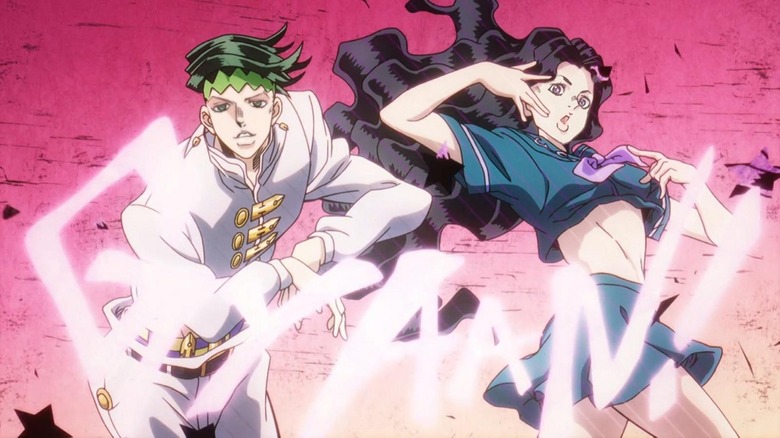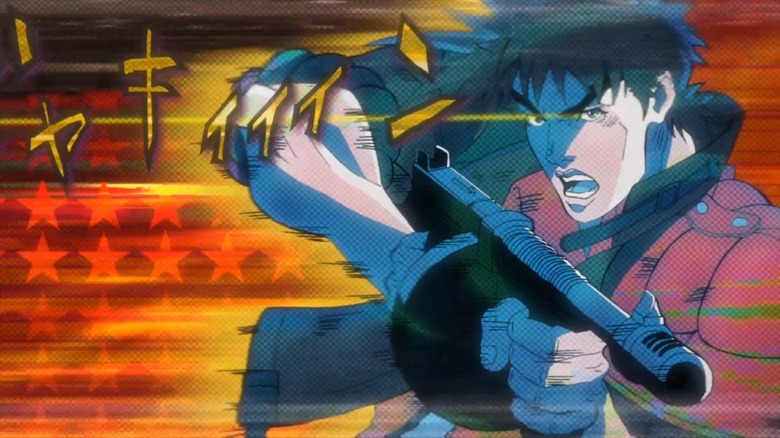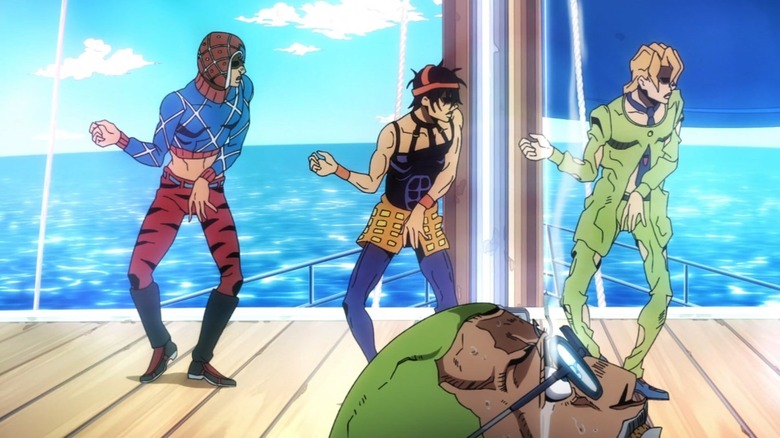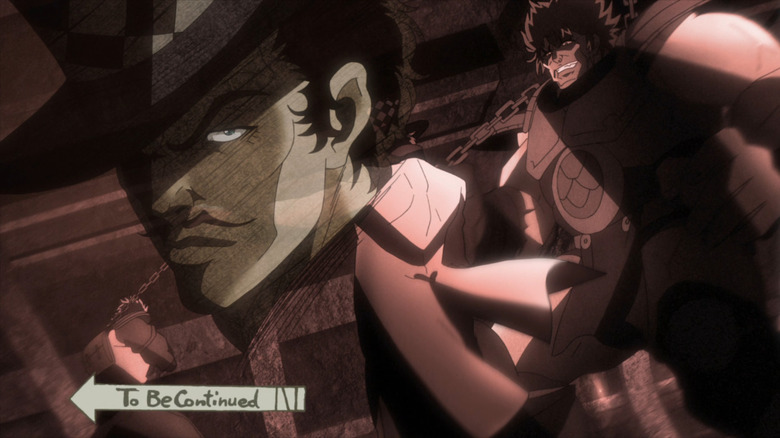Hirohiko Araki Took A Major Risk With JoJo's Bizarre Adventure
Shounen Jump is the most popular manga magazine in the world. "Naruto," "Demon Slayer" and "Dragon Ball" are all Shounen Jump comics, and that's just the tip of the iceberg. But there's a science to the magazine's success. In his alternative history of bizarre '80s cult manga, "Manga Zombie," the critic Takeo Udagawa describes Shounen Jump's "Great Two" system. The first step is to bind writers and artists to the magazine via tight contracts, preventing them from taking their work elsewhere. The second step is reader polls, which determine the fate of Shounen Jump's output. Manga that makes a bad first impression is either reworked or axed. This strategy has led to massive success, but it has real drawbacks as well. Readership is fickle, and risks are heavily penalized. It's no wonder that Udagawa, whose heart lies with the weird, personal and excessive, despises Shounen Jump, whose editors work tirelessly to weed out those qualities from their stable of artists.
"Jojo's Bizarre Adventure" is one of the longest running series in the history of Shounen Jump. It has many of the characteristics associated with the magazine — close-knit male friendships, exciting battle scenes, cliffhangers and long sequences where the characters explain things to the audience. But it also has a quality rare among its fellows: originality. The characters wear outrageous outfits and are named after rock bands. There are scenes of gross-out violence closer to the work of horror artists like Junji Ito than the Shounen Jump norm. The battles become increasingly abstract, their resolutions achieved through puzzle-solving and confidence games rather than endless training. Yet the single most bizarre thing about "Jojo's Bizarre Adventure" is that there isn't just one adventure. There's eight of them, each featuring a descendant of the Joestar family at a different time in history.
I'll be the roundabout
In an interview with Italy's Kappa Magazine, "Jojo" creator Hirohiko Araki confesses that his editors "weren't keen on the idea of switching protagonists, especially for a popular series. If readers took the news badly, it could've ended in a total disaster." Their concerns are understandable. Shounen Jump was a magazine built around reader polls. If readers responded positively to the adventures of Jonathan Joestar and his ongoing conflict with the vampire Dio, the clear next step was to draw his further adventures. The idea that Araki would instead kill Jonathan and replace him with his son Joseph, introducing a mostly new cast of heroes and villains in the process, was ludicrous. But that's exactly what Araki did.
Araki justified his decision in two ways. The first is that he disliked having to draw the same characters over and over. Changing up the series with successive generations would allow for more flexibility in terms of designs, and present opportunities to grow as an artist. "Jojo's Bizarre Adventure" bears this out over the course of its run, transforming from world tour to David Lynch-style uncanny suburbia to a Florida prison based on the needs of each story. The second is that Araki saw "time" as one of the key themes of early "Jojo." While this is represented in the main characters and their powers, the passing of time is also reflected as the series evolves. When we first see Joseph Joestar, he's a wisecracking youth fighting supernatural evil in New York during 1938. The next time he appears, he's an older man fighting alongside his grandson Jotaro. Finally, we see him as a 90 year old whose dementia frustrates his illegitimate son Josuke. Joseph isn't an especially deep character, but "Jojo" uses its chronology to depict different stages of his life. It's just one way in which the series is unique among Shounen Jump comics.
Let the voice of love take you higher
While Araki's editors doubted him at the time, I believe that Araki was correct when he made the decision to split "Jojo" into parts. The most successful Shounen Jump stories run for dozens and dozens of volumes. Compared to Marvel or DC comics, series like "Naruto" or "Dragon Ball" are drawn by the same creators and tell a linear story from beginning to end. Which raises the question: how do you tell a satisfying narrative that lasts for thousands of pages? Sooner or later, the scale of the story becomes unmanageable, the cast becomes far too large for the author to use properly, and the reader is bored to tears. The most successful Shounen Jump comics take inspiration from Araki's example to break themselves into manageable chunks.
One such title is "Hunter x Hunter," a series that wears its "Jojo" influence proudly. It swings wildly between martial arts tournament, gritty mafia thriller, and war epic depending on what the author is interested in that week. These different elements are unified by a carefully thought out system of powers that dictates the cast's capabilities, leading to the same variety of combat set pieces that made "Jojo" such a success. "Hunter x Hunter" has now been on hiatus for several years, but has attracted a loyal following precisely because few other comics in the magazine have been as unpredictable for so long. In this way it has managed to maintain its identity and its readership within the competitive environment of Shounen Jump.
I don't need to try and explain
Even "One Piece," the most successful comic ever to run in "Shounen Jump," is built in such a way as to prove Araki's point. "One Piece" is heavily arc-based, introducing new characters and situations in each new story. New readers can jump into the series at the beginning of a new chapter and get a sense for the characters and their dynamic, even though there's plenty of context they may be missing. What makes "One Piece" an even wilder example of serial comics construction, though, is a careful attention to continuity that far outstrips comics like "Jojo." The series constantly pays off events set up dozens of volumes ago, or introduces characters first mentioned in an aside hundreds of pages before. Like Araki, Oda thought carefully about how to tell his colossal story within the limits imposed by the magazine, structured that story accordingly, and took the risk that his readership would be able to follow along. That risk continues to pay off to this day.
These days, "Jojo" is seralized in Ultra Jump, a Jump comic brand for adult readers. It has gradually transformed from a core title like "Jujutsu Kaisen" or "My Hero Academia" to a boutique series. But while Araki's work has only become more idiosyncratic over time, the series remains popular and has even made inroads in the United States since the release of its anime adaptation. "Jojo" has lasted for 35 years in the most mercenary comics magazine published in Japan, and it has done so because of the author's excesses rather than in spite of them. If the rumors are true, and Hirohiko Araki really is a vampire, I hope to see another 35.



